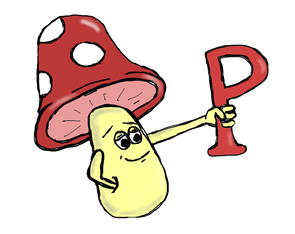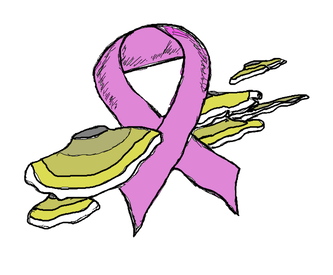|
It's pretty common knowledge that plants need several basic nutrients to survive, one of which is Phosphorus. "N-P-K," is found on every bag of fertilizer, representing the nitrogen, phosphorus, and potassium ratios of the mix.
Phosphorus is important for a variety of reasons. Phosphorus is an important part of nucleic acid compounds which control how the plant creates proteins. Without proteins, the plant cannot produce the enzymes it needs to perform basic life functions. Phosphorus is also important in energy production within the plant. The chemical ATP (adenosine triphosphate), which contains phosphorus (hence, tri-phosphate), has strong double bonds that release energy when broken. Unfortunately for plants, phosphorus is generally available in the soil as a mineral nutrient. What this means is that only small amounts of phosphorus are dissolved in water while the rest of the mineralized phosphorus remains in place in the soil. As a consequence, plant roots must continuously explore the soil in search of more phosphorus. Well, lucky for plants, fungi are ready to help out! Mycorrhizal fungi are fungi that engage in a mutualistic relationship with a plant, exchanging mineral nutrients with the plant for carbohydrates. Mycorrhizal fungi can attach to the plant's roots and extend its super small hyphae all throghout the soil, essentially extending the plant's root zone and providing phosphorus to the plant, among other nutrients (and water!). It is interesting to note that if there happens to be plenty of dissolved phosphorus, or available phosphorus, to be had, then the plant might choose not to partner with mycorrhizal fungi because the cost of feeding the fungus would be greater than the benefits that the fungus would provide! Fungi are awesome. And so are plants! As I write this, scientists are hard at work trying to figure out how to take advantage of fungal enzymes to break down human civilization's waste!
There are fungi that can break down just about anything! There are members of the genus Pestalotiopsis that can break down polyester polyurethane! This is a type of plastic found in skateboard wheels, certain adhesives, foams, fabrics and elsewhere. Researchers have found certain fungi, like Aspergillus terreus and Aspergillus fumigatus, that can use polyethylene as a carbon source. In other words, the fungus can feed on polyethylene! Polyethylene is most famously found in the supermarket plastic bag! Polyethylene products account for approximately 1.66 million tons of municipal solid waste according to waste360.com. Fungi produce a wide variety of enzymes to break apart a host of different types of chemical bonds. This provides an incredible opportunity to learn, understand, and partner with fungi in order to efficiently recycle consumer waste products! Fungi are awesome. Citations: J. R. Russell et al., "Biodegradation of Polyester Polyurethane by Endophytic Fungi" Applied and Environmental Microbiology. 2011. 6076 - 6084 S. Zahra, S. S. Abbas, M. Mahsa, and N. Mohsen. "Biodegradation of low-density polyethylene (LDPE) by isolated fungi in solid waste medium". Waste Management. 2010. 30: 396 - 401 Turkey Tail mushrooms (Tramates versicolor) are a common white-rot polypore found all throughout the world. They can be seen growing out of dead wood on the forest floor year round. These mushrooms are easy to identify and can be collected, dried, ground, and used to make a medicinal tea. Surprisingly, these common mushrooms may have the potential to save lives and improve the well-being of anyone willing to try it. Researchers lately have been investigating it as a potential aid in the fight against cancer. In conjunction with conventional cancer treatments, what these guys seem to do is give the user's immune system a boost by supporting the production and livelihood of killer t cells (Chemotherapy has the unfortunate side effect of destroying these helper t cells). Because of this, they are also very useful for those individuals that suffer from autoimmune disorders. You can see the published results of one study that looked at how Turkey Tail assisted treatment affected breast cancer treatments here. For more information, check out this amazing video which talks about different fungi including Turkey Tails. Paul Stamets' mother has treated for breast cancer with Turkey Tail assisted chemotherapy. (You may want to skip towards the 8 minute mark of the video unless you are especially interested in other fungi and their uses, which i recommend because it's incredible!!) |
is presented by NATURAL LEARNING ENTERPRISES.
Learn more about Natural Learning Enterprise's science education initiatives and what you can do to support scientific literacy at NaturalLearningEnterprises.com
Copyright © 2013 - 2023
Toadstool's Treasures is a registered trademark by Natural Learning Enterprises, LLC. All Rights Reserved.
Web illustrations by Jason Wilson unless otherwise indicated.
Book illustrations by Hannah Nico Weaver unless otherwise indicated.
Toadstool's Treasures is a registered trademark by Natural Learning Enterprises, LLC. All Rights Reserved.
Web illustrations by Jason Wilson unless otherwise indicated.
Book illustrations by Hannah Nico Weaver unless otherwise indicated.



 RSS Feed
RSS Feed


